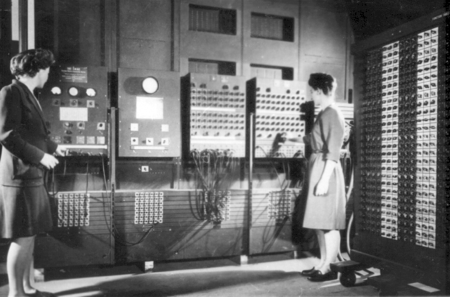Jean Jennings Bartik: The Woman Who Was Programming in 1945
The Computer History Museum, in Mountain View, Calif., is a veritable goldmine of technology and IT lore. For those who can’t visit the museum’s exhibits in person, the associated blog is loaded with stories about early technology leaders, hardware and software. Because early computers were largely funded and used by the government, the blog serves as an archive of some of the most important public technology initiatives ever created.

Credit: ARL Technical Library
Bartik (left) operates the ENIAC with colleague Frances Bilas.
One story that stands out is that of Jean Jennings Bartik. She was not only one of the first women to program the first electronic computer — the Electronic Numerical Integrator and Computer (ENIAC) — but also one of the first people to program any computer. After her death, in March 2011, Steve Lohr, writing in the New York Times, described the importance of Bartik’s early work:
The Eniac, designed to calculate the firing trajectories for artillery shells, turned out to be a historic demonstration project. It was completed in 1946, too late for use in World War II, but was a milestone in the evolution of modern computing.
When the Eniac was shown off at the University of Pennsylvania in February 1946, it generated headlines in newspapers across the country. But the attention was all on the men and the machine. The women were not even introduced at the event.
The Eniac women were wartime recruits with math skills, whose job was initially described as plugging in wires to “set up the machine.” But converting the math analysis into a process that made sense to the machine, so that a calculation could flow through the electronic circuitry to completion, proved to be a daunting challenge.
“These women, being the first to enter this new territory, were the first to encounter the whole question of programming,” said Paul E. Ceruzzi, a computer historian at the Smithsonian Institution. “And they met the challenge.”
Bartik was named a Computer History Museum fellow in 2008 and was interviewed at the awards ceremony. This one-hour video is full of historical tidbits and computer trivia that any techie will appreciate.








